Over time I’ve put together several packing lists for different treks, but I’ve never created a female packing list for Nepal for the regular day to day items. Nepal is an interesting country with a quickly changing dynamic. Below I’ve compiled a list of everything a female traveler should bring with them. A good note is to pack clothing based on where you plan to spend most of your time. If you’ll be in Kathmandu or Pokhara, it’s much more liberal. However, small villages are still very modest for women, and it’s best to dress accordingly.
Luggage and Bags
Backpack
I have this backpack which I love. Whether you’re a backpacker or not, I highly recommend a backpack. There are rarely sidewalks in Nepal and roads are often unpaved. Having a rolling suitcase will be a nightmare. I personally like this one because it has a removable daypack included.

Purse
I have a small purse that I use when I don’t need to lug around my daypack. It’s just big enough to fit my phone and wallet. I recommend a dark color since dust is everywhere and my light colored purses always get filthy. I also recommend a cross body bag. Nepal is safe, but I like that this is harder to steal than a handbag. Plus, this one has RFID protection which helps prevent credit card numbers from being stolen.

Waterproof Laptop Bag
Nepal is a rugged country and computers are expensive. I keep mine in a waterproof bag to make sure it’s always protected. This is especially important during monsoon season.

Mudder Waterproof Bags
I believe in bringing some waterproof bags with me on every trip (no matter what country). If it starts to rain, I throw in my wallet, cellphone, camera, etc. These have saved the day so many times. Especially when me and a friend got caught in a monsoon on a motorbike and had to stash two very expensive cameras.

Packing Cubes
I swear by these things. I’m on the move so often that packing my bag is an art form. I love packing cubes because I can pull them all out without making a huge mess. I have my clothes separated by pants, shirts, underwear, etc. I can find everything so easily, and when it’s time to pack back up, it’s easy to get going again.

Backpack Rain Cover
I do recommend a rain cover for your day pack and large backpack. When it rains in Nepal, it pours, so best to have one handy.

Luggage Lock
I always carry at least two small TSA friendly luggage locks . They’re useful for locking up your bag or for a locker in a hostel. Best, they don’t require a key and you can choose the combination.

Ziplock Bags
I’m seriously amazed at how many times ziplock bags have come in handy. I recommend packing a few of each size from snacks to galloons.
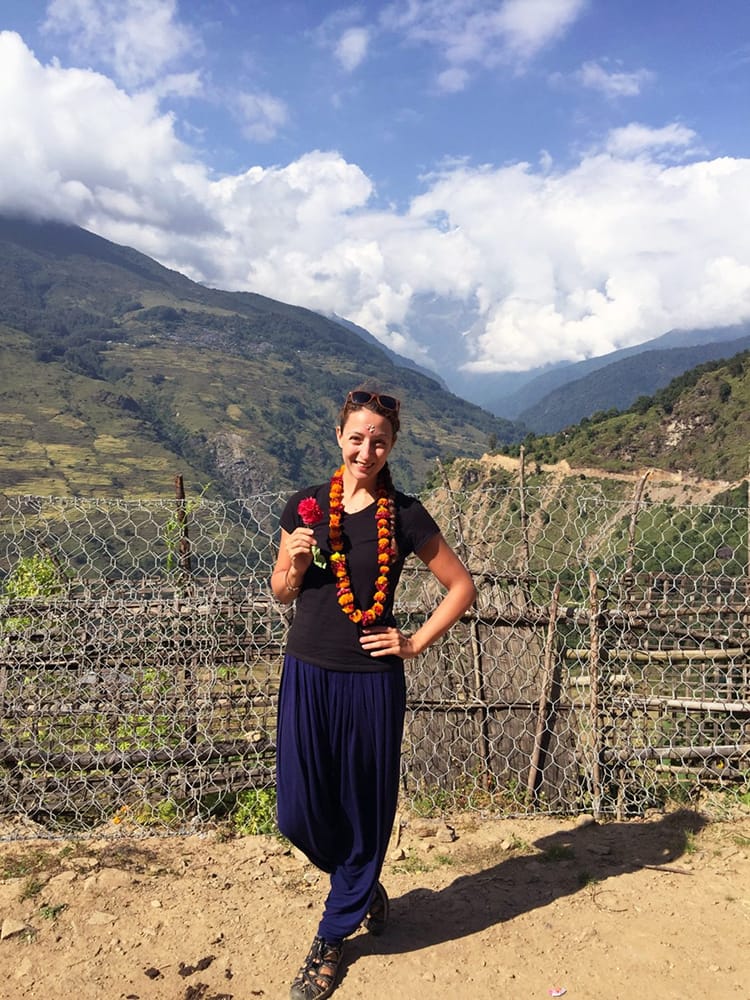
Clothing to Pack for Nepal
T-Shirts (2)
I always try to choose something that doesn’t show sweat. Nepal can be ridiculously hot at times, and you will sweat…a lot. Also, try not to choose anything low cut although form fitting tops are okay.

Long Pants (2)
I like elephant pants or something similar. While women in cities wear jeans, I always find it too humid to be comfortable in them. I prefer lightweight fabrics and loose fitting pants. I tend to buy these in Nepal because they’re cheaper here.

Long Sleeve Top (1)
I like long sleeve cotton tops for going to temples, walking around the city, etc. These are casual and comfortable, but they are also modest and appropriate for Nepal.

Crop Pant (1)
I try not to wear shorts in most modest countries. I find that they tend to elicit a lot of stares and that makes me uncomfortable. It’s also disrespectful to go into holy places which are around every corner in cities like Kathmandu. So I opt for a loose fit crop pant.

Dress (1)
It’s always nice to have a dress for evenings out. It’s also really comfortable if you’re walking around the city in the warmer months. I recommend something long in length, not too low cut, with your shoulders covered. This is important if you plan to go to any temples.

Jacket/Sweater
Depending on the time of year and what part of the country you’re in, it can be cold in the morning or at night. I recommend having one medium weight layer like a fleece jacket or sweatshirt. A cozy sweater would also work. I usually have a hoodie on in the mornings for breakfast when I’m in Kathmandu.

Pajamas
I spend time in dorms so pajamas are key. I would recommend shorts and a tee since air conditioning isn’t always guaranteed.

Workout Outfit
I like to have a workout outfit with me everywhere I go. I took a Muay Thai and an aerial silks class in Kathmandu. It’s also good to have for day hikes or yoga classes. I wear leggings and a tank top.
Swimsuit
I have a bikini with me and for the most part I felt comfortable. I went to one local pool where women were fully clothed and only guys were in the water swimming. In that situation, I wish I had a one piece simply because I felt self conscious and out of place. If you do wear a bikini, I would recommend one that covers you up (i.e. no thongs).
5 Pairs of Socks
I walk almost everywhere so sneakers are important for me, therefore, I wear a lot of socks. I usually do laundry once a week so five is a good number for me.
12 Pairs of Underwear
Again, I do laundry once a week, but I always like to have extra underwear. One time, my laundry place ended up being closed for four days because the owner was sick. So having extra was a life saver.
5 Bras
I like to have three bralettes and two sports bras with me. I like to be comfortable and I find these feel better in hot temperatures, but this is really based on your personal preference.
Raincoat / Poncho
I have a nice lightweight raincoat that doesn’t take up too much room. This is especially important if you’re traveling during monsoon season (May, June, July, August, September)
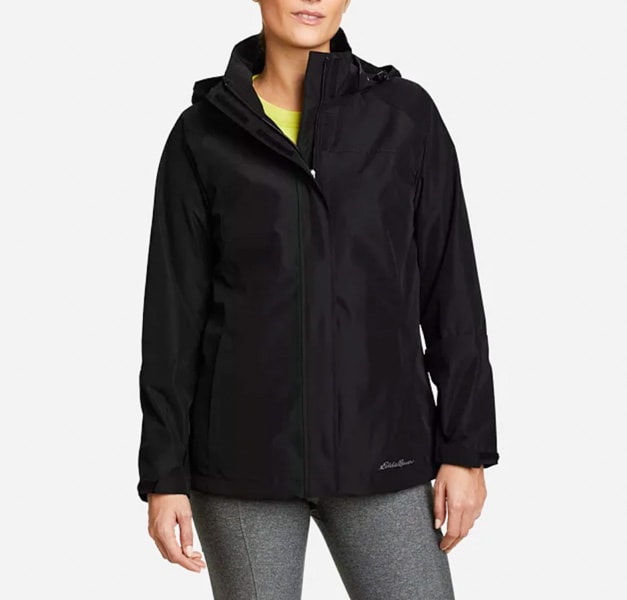
Baseball Cap
This is good for day hikes or just walking around cities.
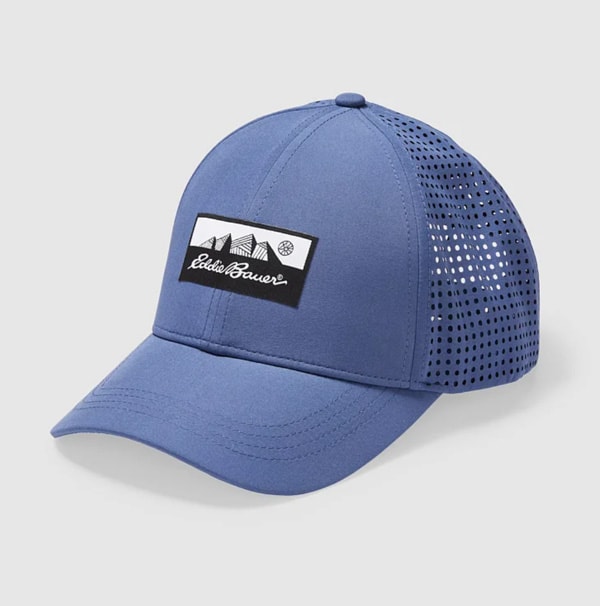
Buff
Nepal is known for its dust. A buff is a great way to breathe a little easier. I wear this when trekking or on cold mornings around the city. In the winter, I also wear it to sleep. It’s super lightweight and warm.

Polarized Sunglasses
This one probably doesn’t need an explanation, but I’d opt for a pair that’s polarized in case you decide to venture into the mountains where there’s snow. Snow blindness is a thing in Nepal, so best to have a good pair.
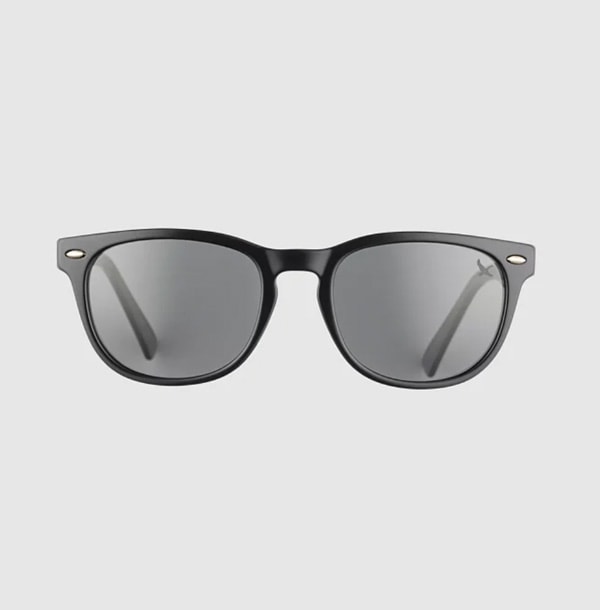
Sneakers
If you won’t be doing a lot of workout related activities (hiking, trekking, sports) then I recommend sneakers that are super comfortable, match your clothes, and are a dark color. I prefer something like Keds for walking around cities.
You’ll probably only have room for one sneaker, so if you are active, I’d opt for the hiking sneaker below.

Hiking Sneakers
Depending on your itinerary and interests, you may want to bring hiking sneakers instead of a cute sneaker (like the Keds above). These are pretty lightweight and can be worn for walks around cities, hikes, treks, and workouts. I would wear these on travel days to make sure my bag had enough space, but the sneaker hiking boot combo is great for backpackers who need versatile items.
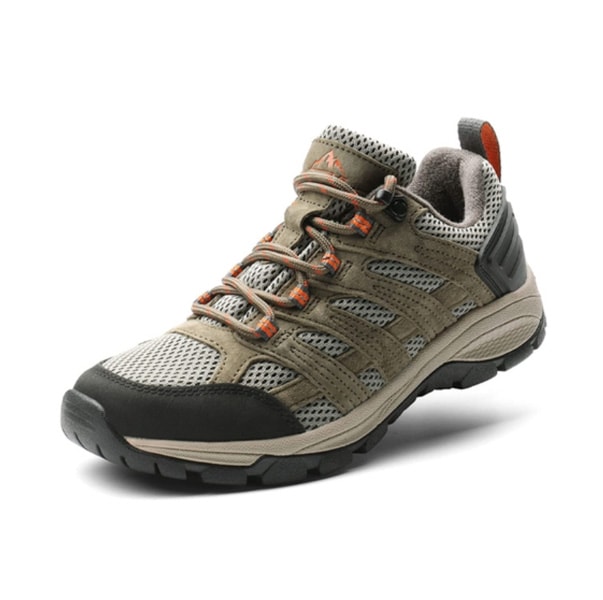
Sandals
I like Keen’s sandals. They’re ugly in my opinion, but they are comfy, easy to wash off, and good for long walks or hiking. Overall, I choose comfort over style on this one.

Flip Flops
I don’t recommend walking around in flip flops. Streets are uneven, and when it rains, the dirt will get kicked up all over your pants. But, these are great for the shower, inside your room, etc.
Toiletries to Pack
Shower Supplies
Shower supplies are super easy to buy in major cities like Kathmandu or Pokhara. If you plan to stay in the same place for awhile, you can buy soap, shampoo, and conditioner when you arrive. If you’re moving around a lot and like to avoid liquids or heavy bottles then I recommend solid shampoo and a conditioning bar which I’ve used and liked in the past. I like to bring a case for my shampoo and soap, a solid face wash, a razor for shaving, and a microfiber quick dry towel.




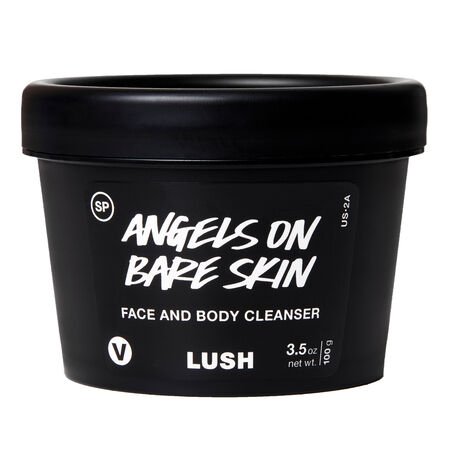
Feminine Hygiene
It’s pretty easy to get pads in Nepal, so I don’t bother packing any. It’s nearly impossible to find tampons though, so pack them if that’s you preference. I like U by Kotex because they take up the least amount of room in my luggage. Personally, I prefer a Blossom Cup. Yes, it was super weird to use at first, but now I love it. I don’t need to pack any tampons or pads and it’s environmentally friendly.
Makeup and Skin Care
I barely use makeup, but I do use Make Sense Tinted Moisturizer, Lash Sense Mascara, and Covergirl Perfect Point Plus. I bring these with me because I’m picky about brands. If you’re pale, I highly recommend buying any coverup you use before you leave. I also recommend a solid sunscreen bring an SPF lip balm.


Hair Care
I always bring all hair ties and a lightweight hairbrush with me. I also recommend a dry shampoo just in case you come across a cold shower situation.
Tooth Care
Tooth brushes and tooth paste can be bought in Kathmandu when you arrive. I always bring a toothbrush with me in my carry on because my flight to Nepal is really long. I recommend a Steripod toothbrush holder which actually sterilizes your brush while you aren’t using it. I also hate regular floss, so I always bring toothpick flossers. Last, I have an emergency dental filling kit that I carry, just in case I can’t find a dentist right away.


General
I always bring deodorant with me because I don’t like the gel kind and that’s what’s easily available in most of Nepal. I also bring a travel sized case of q-tips, an eye mask, ear plugs, and hand sanitizer. I’m a huge fan of Badger Anti Bug Balm because it’s a solid organic bug repellent that works really well. I also bring Travelon Laundry Sheets which take up no room and are good in a pinch.


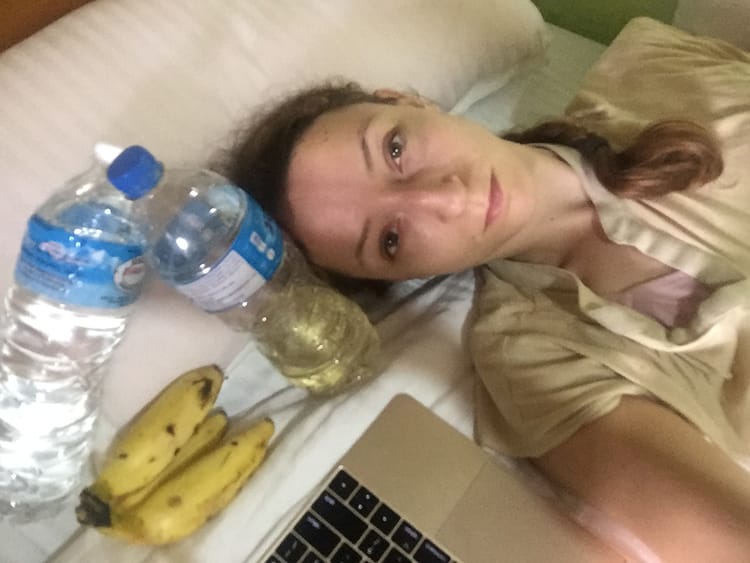
Medicine, Vitamins & First Aid
Medicine
Most of these items are readily available in major cities. I always like to have them with me in case I’m in an area without easy access to doctors. I ALWAYS carry a high grade antibiotic, a pain killer, cold medicine (for day and night), anti diarrhea pills, Diaresq, and throat drops. If I’m trekking, I carry Diamox (but I don’t use it unless I actually feel sick). In some areas, it’s recommended to have malaria pills, however I have never used them in Nepal.



Vitamins
I prefer to take vitamins over medicine, so I always stock up on immune boosting vitamins to keep me healthy. I like to have olive leaf (for immunity), activated charcoal (for food poisoning), zinc (for colds), a multivitamin, probiotic gummies (for digestion), and Nuun electrolytes (for quick rehydration).



First Aid
A first aid kit is always a good idea. I recommend having a Swiss army knife, lighter, medical tape, ace bandage, duct tape, antiseptic towelettes, Neosporin, bandaids, and an emergency water filtration straw. Some of these may sound weird, but I swear they all come in handy once in a while. I pack my own first aid kit, however, you can also buy pre-made ones.


Electronics
Photography
As a travel blogger, this category is important for me. If you don’t need high quality photos, I’d recommend just using your phone to save space and keep your bag light. I carry a GoPro along with a three way mount, remote, spare batteries, and the charger. The other GoPro accessories are a waste of money in my opinion. I also carry a Canon EOS Mirrorless Camera which I love. It’s smaller than a DSLR. The only downfall is that the zoom isn’t great if you want to shoot wildlife.
Computer
I have a Macbook 13″ which I’m obsessed with. It’s insanely lightweight, and since I work from the road, it goes everywhere with me. I bought mine refurbished from Apple to save money.
Power Bank
I really like my Goal Zero Power Bank. Since I use it so much, I’m thinking of upgrading to something a little more high tech in the future. For everyday use though, it is really great. It’s saved my butt a few times during power outages.
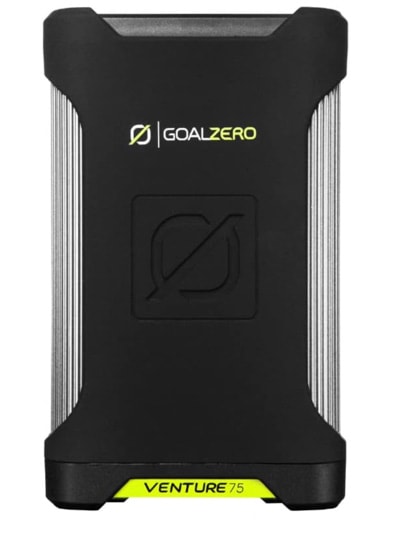
Kindle
I love having a Kindle Paperwhite. I’m not big on going out at night so I generally read before bed. I like that it’s got back lighting, so I don’t have to have any lights on when I’m in a shared dorm. It also holds a battery charge for a long time. I can usually read a whole book before needing to recharge it. The newest edition is advertised as waterproof. I have an older model, but am a little jealous of the new one!
General
You’ll need a good power adapter in order to charge everything. I recommend buying a headlamp and batteries. Sometimes you’ll need to use bathrooms that are outside and seeing at night is not easy. It’s best to have a set of spare batteries for it as well. To protect my phone, I use a Lifeproof case. That way I don’t have to worry about getting it wet or dropping it.
Miscellaneous
Food
I like to bring a bar of chocolate, Kind pressed bars, and beef jerky with me. That might sound weird but these are my favorite snacks to have on hand.
Sewing Kit
I always carry a mini sewing kit and some patches. I’ve used the sewing kit several times to help fellow travelers repair ripped pants and the patch kit came in handy when I was in Cambodia, and a rat chewed through my luggage during an intense search for peanuts.
Fabric Softener Sheets
This one sounds weird, but I put a couple of dryer sheets in my luggage to make sure everything smells super nice. I keep a few spares in a ziplock bag so I can rotate them with fresh ones over time.
Money
It’s important to have some cash on you. Your bills MUST be new with no tears or creases. I know that sounds insane, but people won’t exchange it if it’s ripped or old. Nepali rupees however can be falling to pieces and no one cares. I like to have $100 USD with me. I don’t exchange it except in an emergency. I get $50 worth in fives and ones just in case I get stuck without an ATM and need to use USD to pay. Luckily, people will accept USD if you don’t have rupees.
Cards
I carry two credit cards and two debit cards. I keep one of each in my purse and one of each in my locker. I’ve had my credit card number stolen twice while traveling in Asia, so having a backup is very important. The debit cards are how I get money out of ATMs. I recommend Charles Schwab if you’re American. For a credit card, I recommend Capital One’s Venture Card. During my first year of travel, I never had to pay for a flight because I saved up so many points (and I had over 10 flights that year including from the U.S. to Asia). You also don’t have to call them every time you switch countries, and I’ve never had my card stop working because I was in another country. Trust me, no one wants to be stuck on a long distance call trying to sort out a credit card problem on vacation.
VPN
I recommend a VPN (virtual private network) if you’ll be using your computer or phone while in the country. A VPN allows you to access websites while using public networks with privacy. If you plan to look at banking apps, booking sites, etc. then I highly recommend it as my credit card was stolen two times in Nepal before getting a VPN. Now, I use ExpressVPN which is inexpensive and easy to use. It costs $8 a month if you sign up for a year or $12 for a single month.
Documents
Obviously, you’ll need your passport. I like to make a copy of my passport and visas, so I can have a copy in my purse. I also order a handful of passport photos so that I don’t have to buy them for trekking permits or anything. Keep a copy of your plane ticket and travel insurance as well.
Travel Insurance
I recommend getting travel insurance. Depending on the policy you pick, this can cover simple things like lost baggage or trip cancelation. More in depth policies cover expenses like medical, evacuation, etc. You never know when you’ll need travel insurance, so I do recommend having a policy if you are traveling in Asia.
Make sure to read the entire policy including the fine print so you know what is covered and how to be reimbursed. Keep receipts for everything when you travel, and if you’re not sure about your coverage, call and ask the insurance company questions in advance.
Trek Packing Lists
I’ve left trekking gear off the list, but you can find more information on specific treks and what to pack in these posts…
- Everest Base Camp Packing List
- Annapurna Circuit Packing List
- Langtang Packing List
- Mera Peak Packing List
- Kathmandu Valley Trek Packing List
- Tsho Rolpa Packing List
- Annapurna Base Camp Packing List
- Gosaikunda Lake Packing List
- Mardi Himal Packing List
- Helambu Packing List
- Panchase Trek Packing List
Shopping for Trekking Gear in Nepal
Planning to shop when you arrive? On my first trip to Nepal, I was backpacking for 9 months in Southeast and South Asia. I didn’t have room in my pack to carry a bunch of heavy winter clothes with me, so I ended up buying everything in Thamel (the tourist hub in Kathmandu). I arrived a few days early, so I had plenty of time to search for things. I learned quickly that I’d need to check multiple stores and negotiate a lot.
Recently, I was approached by Mount Ready to try out their new system. They make the experience a lot easier. You simply go to their website, pick your trek and they have a pre-arranged pack with everything in it. It’s the same stuff you buy in Thamel (including knock offs) but you don’t have to spend days running around and negotiating. The prices are fair and you can add or remove stuff from the pack. You show up at the store, and everything is picked out for you. All you have to do is try it on and pick the colors you like. It’s super simple.
Before recommending them, I wanted to test it out myself, so I had them put together a pack for the Annapurna Circuit. I removed a few things, changed some sizes and styles and checked the quality of the clothes. If you’re doing a trek once and don’t want to invest a lot of money, then this is the way to go. I started out with a lot of items from Thamel and slowly upgraded my pack with the Eddie Bauer products listed above.
You might also like…

Michelle Della Giovanna
Writer at Full Time Explorer
I’m just your average New Yorker who quit her job in the fashion industry to explore the world. Come find out what it’s like to trade in five-inch heels for squat toilets.
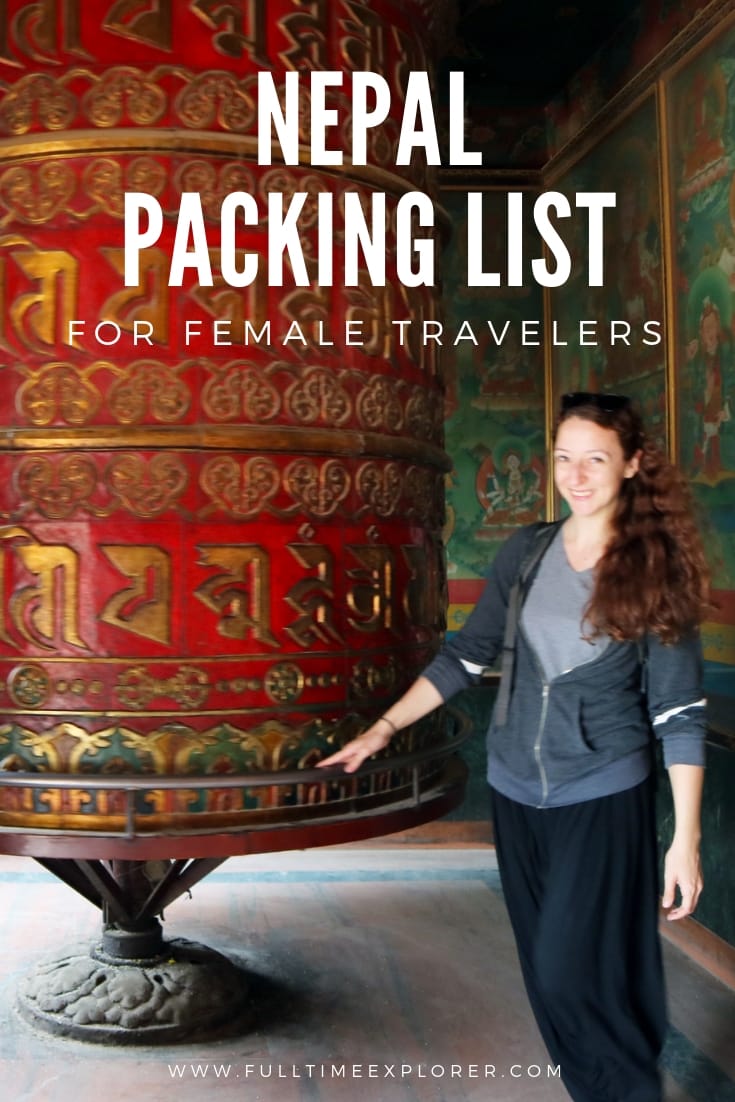

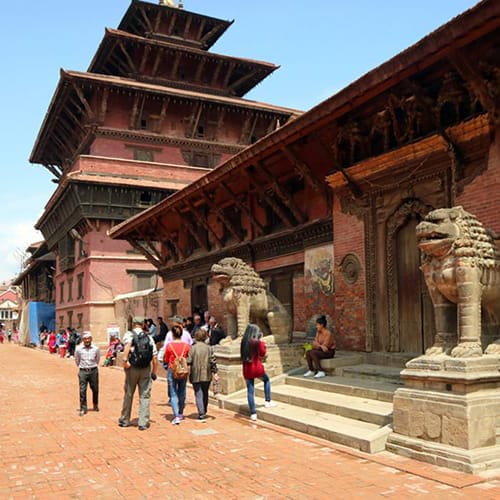
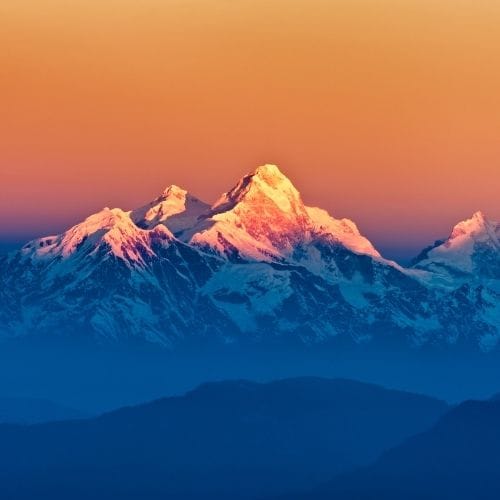
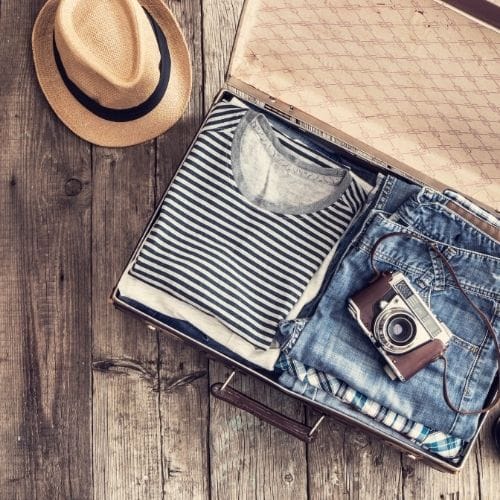
Great article. Just a quick comment on the underwear issue. Nepali get really grossed out with dirty underwear. It’s recommended that you should wash or pre-wash underwear before you take them to a laundry service.
Thanks Ama,
I actually didn’t know that, so that’s great advice. Is this just for hand washing or also for places with a machine?
Best,
Michelle
Hi there, thank you for your valuable advices. We will be going to Kathmandu in Dec. Can I asked if you know a reliable and reasonable price driver transfer that we can contact so to take us around. If you don’t use driver how do you get around to visit to all the Unesco sights in Kathmandu? On arrival at the airport can I use the prepaid taxi. I don’t want to be swamped by taxi drivers and got to negotiate prices. I also want to go to Nagarkot and stay one night then need to know how to get there and back. Kindly advice on the taxi prices and where to get transport. Appreciate your advice
Hello Sandra,
I use InDriver which is an app like Uber to hire cars. When I arrive at the airport, I use the prepaid taxi which is normally about 700 rupees to Thamel. You can also use InDriver, but you have to wait and after a long flight it’s worth it to just get in the taxi and go. For Nagarkot, I’ve never taken a taxi. I’ve hiked there, driven with friends, and once took a local bus but it’s extremely hard to navigate. Most people hire a private jeep but it’s expensive. You may be able to negotiate a taxi to take you but it will cost at least $20-$30 each way.
Hope this helps.
Best,
Michelle
Thank you so much for you good info
Can you please tell me how and when you use the activated charcoal? Another friend recommended this to me as well, but I’m not sure if I take it every day or just if I have an upset stomach. Thanks!
Hello Sally,
I don’t take it every day. I only use it if my stomach starts to hurt after a meal or if I question what I ate and think to myself “hmmm maybe I shouldn’t have eaten that” haha. You should do some research on your own though. It can negate other medicines so if you take any prescriptions look it up in advance. Also, I find it works best when the food you are unsure about is still in your stomach. If you are vomiting the next day and decide to take it, make sure to take it with food when you are able to keep it down.